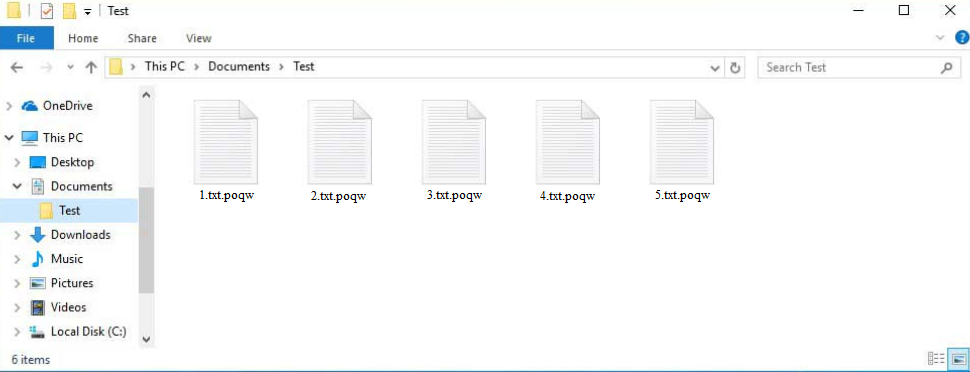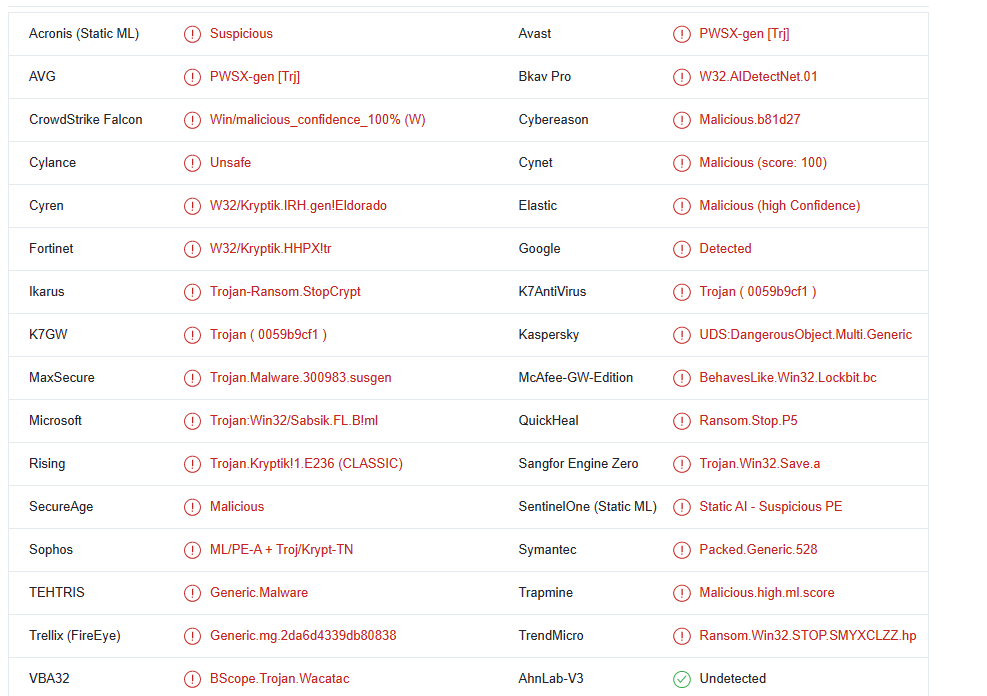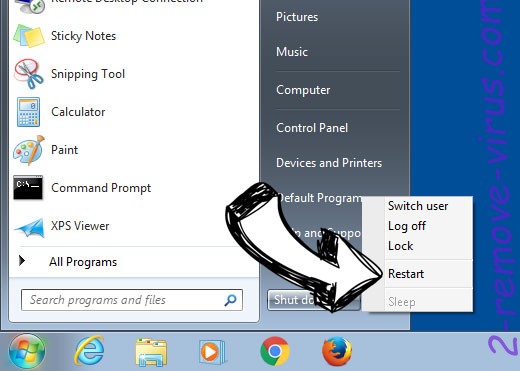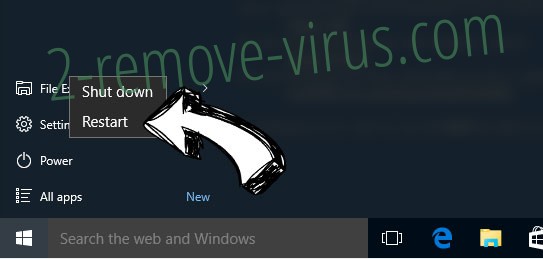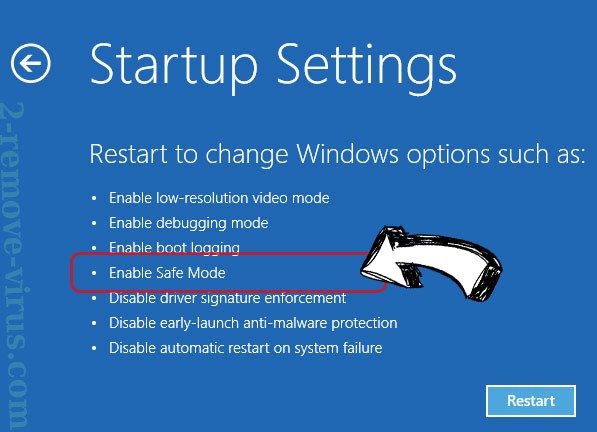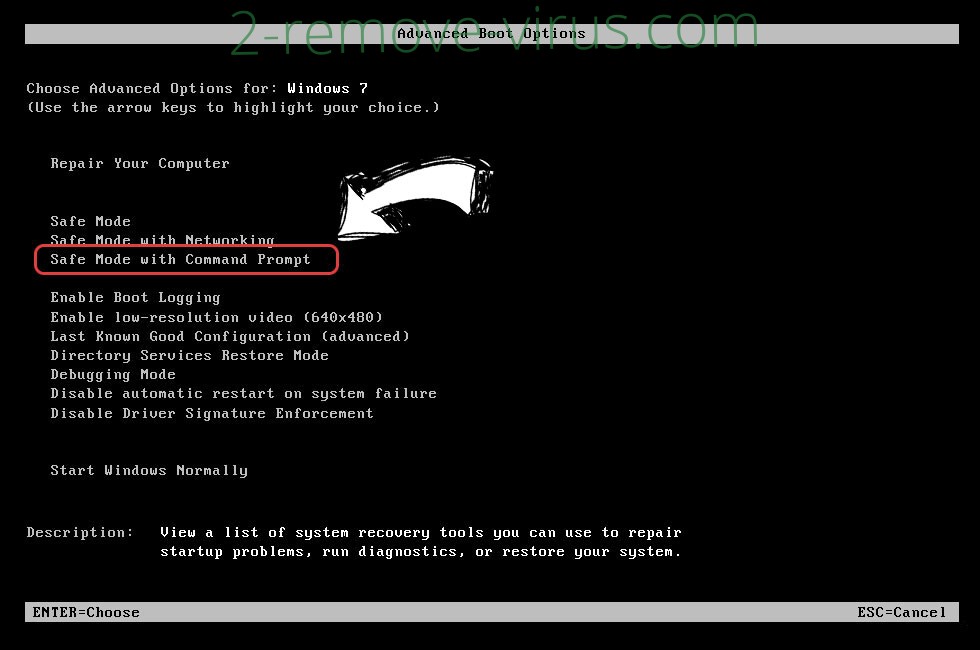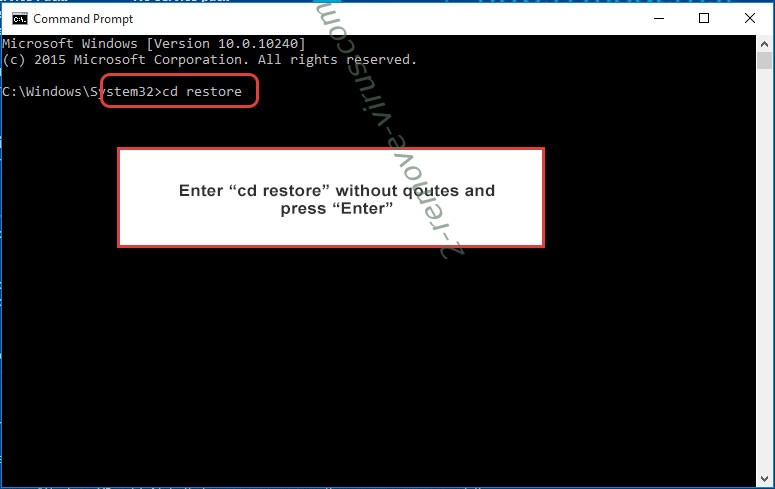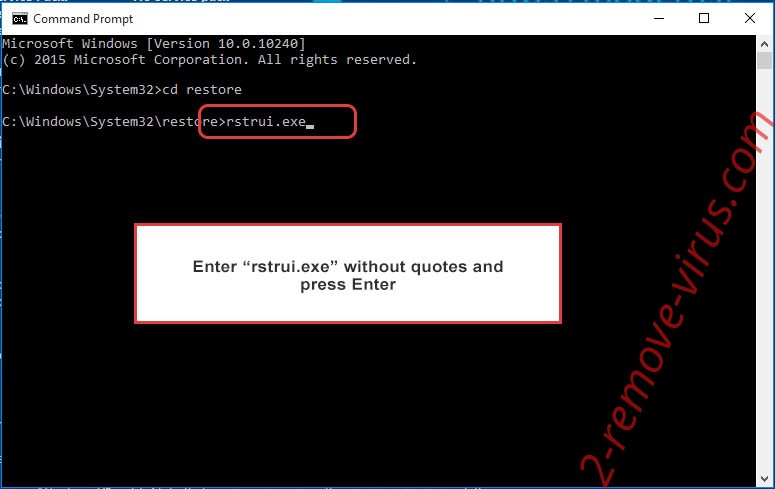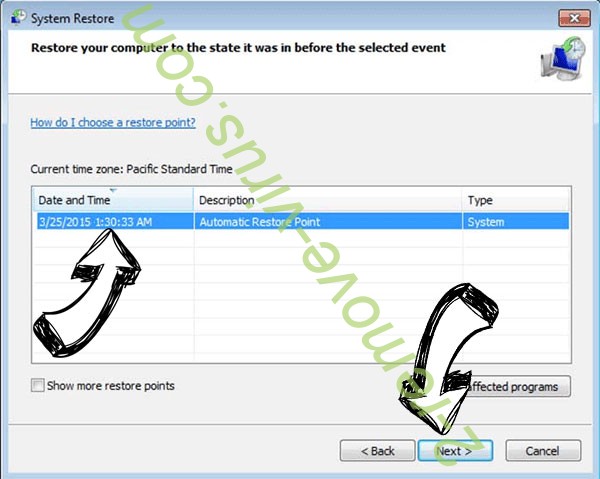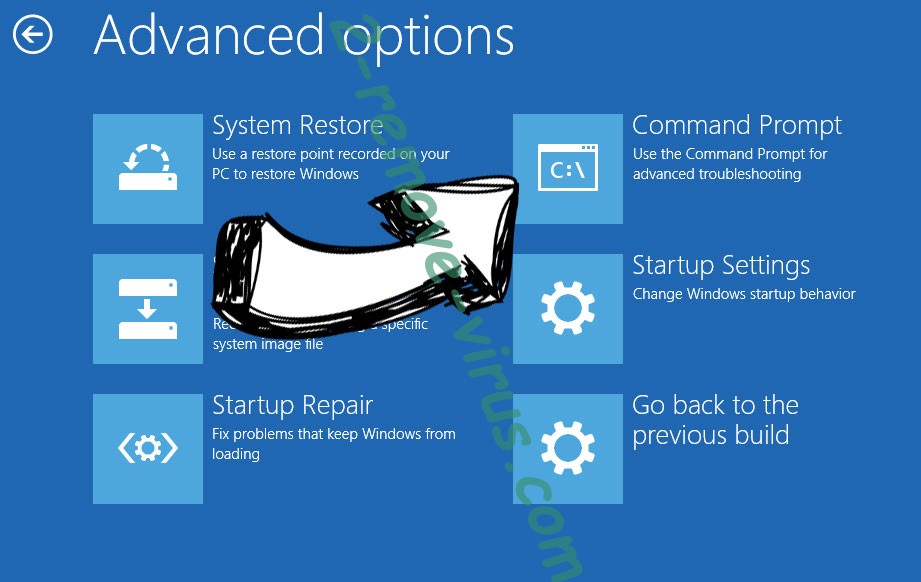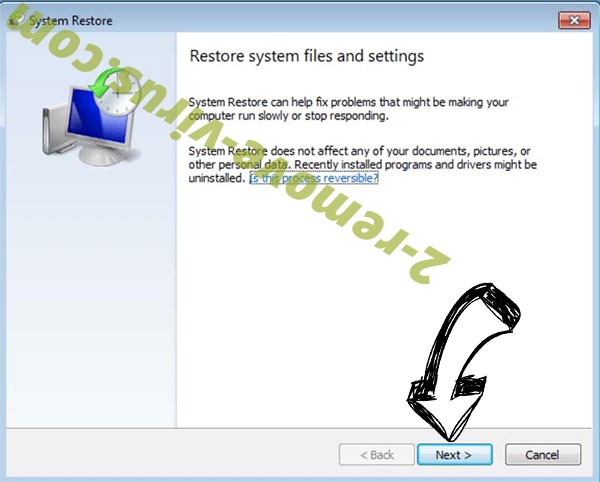Poqw ransomware is a file-encrypting malware, part of the Djvu/STOP ransomware family. This malware is classified as a very serious infection because once files are encrypted, it may not be possible to recover them. Encrypted files will have .poqw attached to them, so you will be able to immediately identify which files have been affected. Unless you use a certain decryptor on the files, you will not be able to open them. And obtaining the decryptor is difficult given that the only people who have it are the malicious actors operating this ransomware. They will try to sell you the decryptor for $980, but it is not recommended to buy it or even get in touch with the hackers.
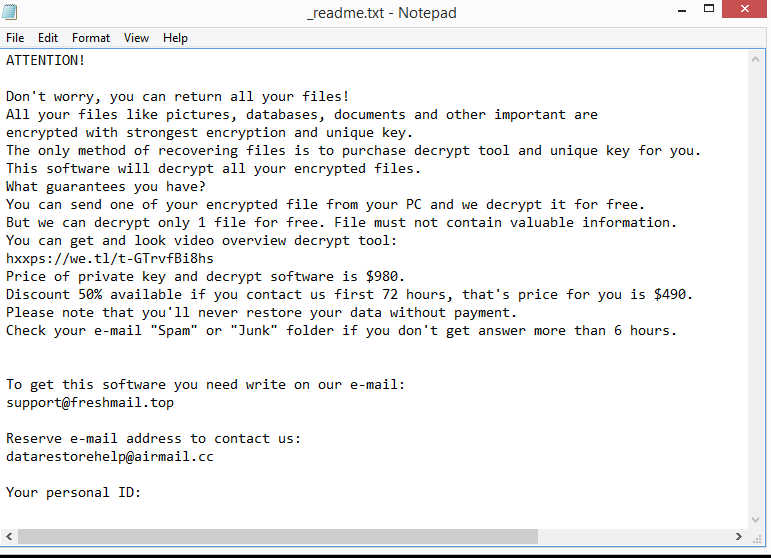
Your personal files will immediately start to be encrypted as soon as ransomware is initiated. It will mainly target personal files such as photos, videos, images, documents, etc. The extension .poqw will be applied to all encrypted files. A text.txt file, for instance, would become text.txt.poqw if encrypted. Without first using a special decryptor on them, files with this extension will not be openable.
The _readme.txt ransom note explains how to obtain the decryptor. The email mentions a 50% discount for users who get in touch with the cyber crooks within the first 72 hours, though the regular price is $980. We generally do not recommend paying the ransom or even contacting cyber criminals. Remember that you are dealing with cyber criminals, who won’t feel obligated to assist you even if you pay. Sadly, a lot of users in the past never got their decryptors.
You shouldn’t experience any problems with file recovery if you have a habit of regularly backing up your personal files and there are backups of your files available. However, it’s important that you use anti-malware software to first remove Poqw ransomware from your computer. Avoid attempting to delete the ransomware manually since you risk damaging your computer even more. You can safely connect to your backup and restore your files once the ransomware has been completely removed from your system.
It will be more challenging to recover files if you don’t have a backup. A free Poqw ransomware decryptor might be released in the future, but one is not available at the moment. It will be challenging for malware researchers to develop it because this ransomware uses online keys to encrypt files. This means that each victim has a unique key and that key is necessary to decrypt files. However, it’s not impossible that the cybercriminals themselves would eventually release the keys. It has happened in the past with other ransomware. In case a free Poqw ransomware decryptor does become available, make a backup of your encrypted files. NoMoreRansom is a good source for free decryptors.
Ransomware distribution methods
Learning how malware spreads and developing better online habits can help you avoid malware infections. Users who have bad browsing habits are far more likely to become infected with malware.
Torrents are one of the most common ways users pick up malware infections. It is well known that torrent sites are frequently poorly moderated, which enables malicious actors to post torrents containing malware. Malware is typically found in torrents for popular content. For example, malware can be found in torrents for movies, TV shows, video games, software, etc., especially if the content was only recently released. We strongly advise against using torrents to pirate, or pirating in general. Not only is it essentially content theft, but it’s also harmful to your data and computer.
Emails are also commonly used to spread malware. Leaked email addresses are widely available on hacker sites, which criminals buy by the thousands for their malicious email campaigns. These malicious email senders frequently claim that they are representatives of well-known companies and are sending important documents. The emails may be written in a threatening manner to alarm the user. Scare tactics are often successful in malicious attacks.
However, malicious emails are typically very obvious. Grammar and spelling errors are usually the biggest giveaways in these emails. When senders identify themselves as representatives of legitimate businesses but their emails are riddled with mistakes, something is clearly not right. The way an email addresses its recipients can also reveal whether it is malicious. In contrast to generic terms like “User,” “Customer,” “Member,” etc., you would be addressed by name if you received an email from someone whose attachment you would need to open. Malicious actors typically don’t know the names of potential victims, therefore they use generic words to address users.
Additionally, it’s a good practice to always check unsolicited email attachments with VirusTotal or anti-malware software before opening them. If malicious actors have access to personal information, some malicious emails may be significantly more sophisticated. This typically occurs when a specific person is the target and cybercriminals put more time and effort into deceiving their victims.
How to remove Poqw ransomware
If you are unsure of how to remove Poqw ransomware manually, do not try. Use an anti-malware program instead. If you’re not careful, you can end up doing more harm to your computer. Additionally, if you connect to your backup after failing to completely remove the Poqw ransomware, your backed-up files would also be encrypted. Therefore, removing ransomware is significantly easier and safer with anti-malware software. Until the ransomware has been completely removed, do not try to access your backup because you could end up losing those backed-up files as well.
If you don’t have a backup, your only choice is to wait for the release of a free Poqw ransomware decryptor. It’s uncertain whether a Poqw ransomware decryptor will actually be released, but if you wish to recover your files in the future, back up the encrypted files and occasionally check NoMoreRansom. We should also warn you that there are many fake decryptors advertised on various forums so you need to be very careful.
Poqw ransomware is detected as:
- PWSX-gen [Trj] by AVG/Avast
- Trojan:Win32/Sabsik.FL.B!ml by Microsoft
- Ransom.Win32.STOP.SMYXCLZZ.hp by TrendMicro
- UDS:DangerousObject.Multi.Generic by Kaspersky
Quick Menu
Step 1. Delete Poqw ransomware using Safe Mode with Networking.
Remove Poqw ransomware from Windows 7/Windows Vista/Windows XP
- Click on Start and select Shutdown.
- Choose Restart and click OK.

- Start tapping F8 when your PC starts loading.
- Under Advanced Boot Options, choose Safe Mode with Networking.

- Open your browser and download the anti-malware utility.
- Use the utility to remove Poqw ransomware
Remove Poqw ransomware from Windows 8/Windows 10
- On the Windows login screen, press the Power button.
- Tap and hold Shift and select Restart.

- Go to Troubleshoot → Advanced options → Start Settings.
- Choose Enable Safe Mode or Safe Mode with Networking under Startup Settings.

- Click Restart.
- Open your web browser and download the malware remover.
- Use the software to delete Poqw ransomware
Step 2. Restore Your Files using System Restore
Delete Poqw ransomware from Windows 7/Windows Vista/Windows XP
- Click Start and choose Shutdown.
- Select Restart and OK

- When your PC starts loading, press F8 repeatedly to open Advanced Boot Options
- Choose Command Prompt from the list.

- Type in cd restore and tap Enter.

- Type in rstrui.exe and press Enter.

- Click Next in the new window and select the restore point prior to the infection.

- Click Next again and click Yes to begin the system restore.

Delete Poqw ransomware from Windows 8/Windows 10
- Click the Power button on the Windows login screen.
- Press and hold Shift and click Restart.

- Choose Troubleshoot and go to Advanced options.
- Select Command Prompt and click Restart.

- In Command Prompt, input cd restore and tap Enter.

- Type in rstrui.exe and tap Enter again.

- Click Next in the new System Restore window.

- Choose the restore point prior to the infection.

- Click Next and then click Yes to restore your system.

Offers
Download Removal Toolto scan for Poqw ransomwareUse our recommended removal tool to scan for Poqw ransomware. Trial version of provides detection of computer threats like Poqw ransomware and assists in its removal for FREE. You can delete detected registry entries, files and processes yourself or purchase a full version.
More information about SpyWarrior and Uninstall Instructions. Please review SpyWarrior EULA and Privacy Policy. SpyWarrior scanner is free. If it detects a malware, purchase its full version to remove it.

WiperSoft Review Details WiperSoft (www.wipersoft.com) is a security tool that provides real-time security from potential threats. Nowadays, many users tend to download free software from the Intern ...
Download|more


Is MacKeeper a virus? MacKeeper is not a virus, nor is it a scam. While there are various opinions about the program on the Internet, a lot of the people who so notoriously hate the program have neve ...
Download|more


While the creators of MalwareBytes anti-malware have not been in this business for long time, they make up for it with their enthusiastic approach. Statistic from such websites like CNET shows that th ...
Download|more
Site Disclaimer
2-remove-virus.com is not sponsored, owned, affiliated, or linked to malware developers or distributors that are referenced in this article. The article does not promote or endorse any type of malware. We aim at providing useful information that will help computer users to detect and eliminate the unwanted malicious programs from their computers. This can be done manually by following the instructions presented in the article or automatically by implementing the suggested anti-malware tools.
The article is only meant to be used for educational purposes. If you follow the instructions given in the article, you agree to be contracted by the disclaimer. We do not guarantee that the artcile will present you with a solution that removes the malign threats completely. Malware changes constantly, which is why, in some cases, it may be difficult to clean the computer fully by using only the manual removal instructions.
